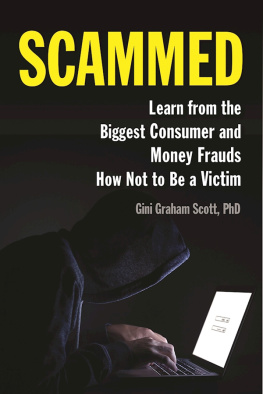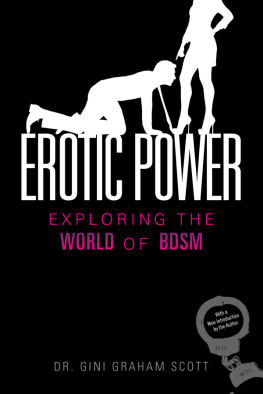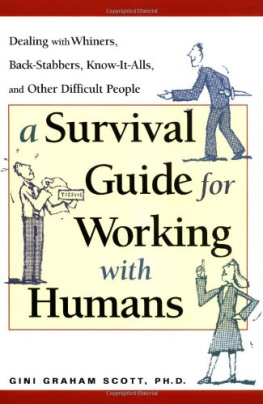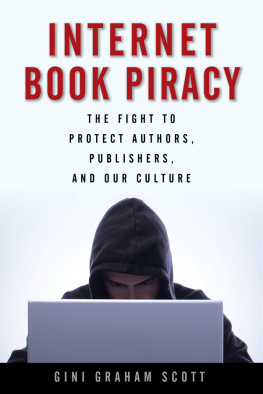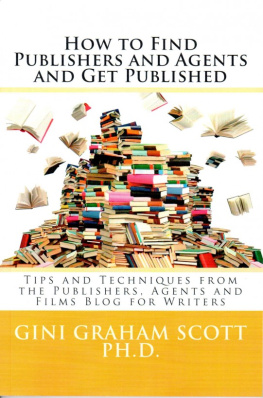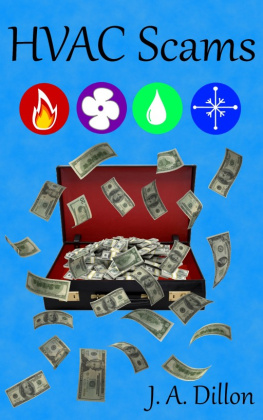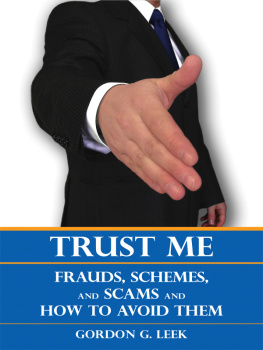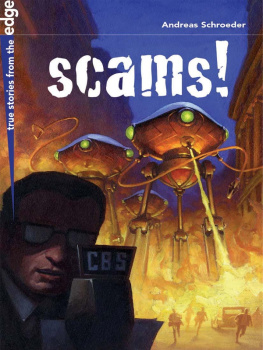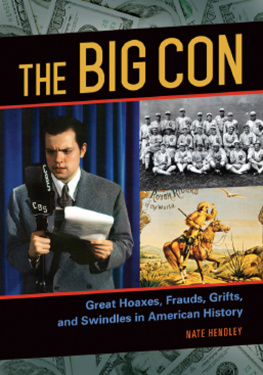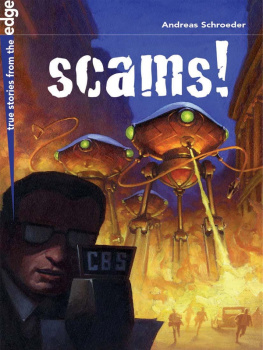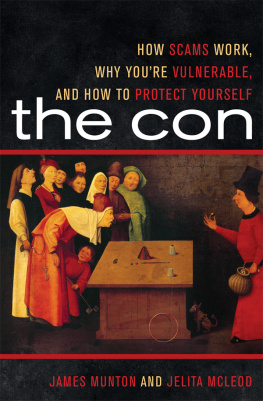Copyright 2016 by Gini Graham Scott, PhD
All rights reserved. Copyright under Berne Copyright Convention, Universal Copyright Convention, and Pan American Copyright Convention. No part of this book may be reproduced, stored in a retrieval system, or transmitted in any form, or by any means, electronic, mechanical, photocopying, recording or otherwise, without the express written consent of the publisher, except in the case of brief excerpts in critical reviews or articles. All inquiries should be addressed to Allworth Press, 307 West 36th Street, 11th Floor, New York, NY 10018.
Allworth Press books may be purchased in bulk at special discounts for sales promotion, corporate gifts, fund-raising, or educational purposes. Special editions can also be created to specifications. For details, contact the Special Sales Department, Allworth Press, 307 West 36th Street, 11th Floor, New York, NY 10018 or .
19 18 17 16 15 4 3 2 1
Published by Allworth Press, an imprint of Skyhorse Publishing, Inc.
307 West 36th Street, 11th Floor, New York, NY 10018
Allworth Press is a registered trademark of Skyhorse Publishing, Inc., a Delaware corporation.
www.allworth.com
Cover design by Mary Belibasakis
Library of Congress Cataloging-in-Publication Data in available on file.
Print ISBN: 978-1-62153-503-4
Ebook ISBN: 978-1-62153-504-1
Printed in the United States of America
TABLE OF CONTENTS
CHAPTER 1
RECOGNIZING AND UNDERSTANDING THE DYNAMICS OF A SCAM
Scams have a long history, rooted in the use of lying and deception to achieve an aimskills that go back to the beginnings of human history and are even found among animals and plants. Such skills are used for survival and are based on basic human drives to achieve power, status, prestige, and love. Individuals use deception to win political office, gain military success, find a job, win a love interest from a rival, escape a threat, or for countless other reasonsstrategies I described at length in several books on lying: Playing the Lying Game, The Truth About Lying, and Lies and Liars: Why Sociopaths Lie and How to Deal with Them .
While a scam employs lying and deception, it is usually a more elaborate scheme that involves a fraudulent business scheme or swindle
In the United States, major scams have occurred throughout history, from the Boston Tea Party to trick the British and help the United States gain independence; to the 1921 to 1924 Teapot Dome Scandal, in which President Hardings Secretary of the Interior Albert G. Hall leased navy petroleum reserves at low rates to private oil companies without competitive bidding in return for bribes from the companies; to Bernard Madoffs notorious scheme to rip off investors with the largest Ponzi investment scheme in US history, defrauding investors of billions. And worldwide every day, scams affect millions of individuals, from counterfeit products and unneeded and overcharged auto repair and home repair scams to tricks at gaming tables and many more.
In turn, dozens of websites have sprung up where individuals can report all manner of scams, such as Ripoff Report (www.ripoffreport.com), ScamOrg (www.scamorg.com), Scam Book (www.scambook.com), Complaints Board (www.complaintsboard.com), Complaints List (www.complaintslist.com), ScamGuard (www.scamguard.com), and Scam Adviser (www.scamadviser.com). Still others are Hoaxbusters (www.hoaxbusters.org), specializing in Internet hoaxes; Truth or Fiction (www.truthorfiction.com), which includes the truth about scams, rumors, hoaxes; urban legends, and false stories spread by the Internet; and Snopes (www.snopes.com), which provides the truth about misleading information and has a page devoted to frauds and scams (www.snopes.com/fraud/fraud.asp).
As new technologies have transformed all aspects of our lives, scams have become more sophisticated, taking advantage of these technologies to create all manner of new scams, costing the victims and the economy ever more money. However, the basic dynamics remain the sameto trick someone by appealing to the basic motivators, such as the promise of money, fame, success, power, beauty, and youth, to get that person to take some action that benefits the scammer. Only later does the victim discover that he or she has been duped.
Presumably, the costs today are even higher, and the daily news regularly brings reports of even more sophisticated scams, such as phony IRS phone calls and emails advising individuals to quickly send a payment via Western Union to an IRS address to avoid potential imprisonment. Another popular con is the Nigerian email, which offers victims a high commission to help transfer money out of the country, though they first have to send a small amount for transfer or good faith fees. Or sometimes these emails ask the victim to send money to help a relative or friend who is in trouble in another country.
Unfortunately, the real costs of all these scams are hard to estimate, since according to a 2012 Financial Industry Regulatory Authority survey, more than 75 percent of the victims dont come forward. And still other studies, such as from the Canadian Anti-Fraud Centre, indicate that the $60 million a year in losses from personal fraud represents only 1 to 5 percent of the total, since 95 percent or more of the victims dont report the crimes.
In some cases, particular groups are targeted for a fraud, such as the elderly, people seeking a roommate, job seekers, and others. A common scam involves sending an individual an email, purportedly from a family member, friend, or business associate, in which the con artist sends what appears to be a certified check and asks the victim to return an overpayment or refund via Western Union. The reasons for sending the money vary, but the check proves to be worthless and any money sent by Western Union ends up funding the scammer.
For example, in one scheme, speech therapists received an email asking for a price quote for helping a person in need of a speech treatment. If the therapist responded, he or she got a second email saying the person previously sent a certified cashiers check to another professional who is charging more, and so they want to forward the check to the therapist to prepay for the treatment, and the therapist should then return the difference. The scam is that the certified check looks legitimate but isnt, so when the check is returned, the therapist is out that money plus any charges for depositing a bad check, while any money sent to the scammer is gone. In another variation of the scheme, the scammer sends a phony check and subsequently sends an email describing a serious family situation requiring them to cancel a planned treatment, so now they would like the therapist to return their money immediately via a Western Union payment. But here, too, the check is worthless and the money sent via Western Union is lost. More recent variations on this scheme offer phony roommates or jobs and require payments to refund money from a check sent to pay for a room or job.
Unfortunately, law enforcement attempts to stop the scams seem to be whack-a-mole efforts. Some of the most notorious scammers are arrested and prosecuted by law enforcement in the hopes of dissuading other bad actors, but this is without much noticeable effect; other scammers continue to operate and still other new ones pop up. An example of this difficulty is the major crackdown by the National Association of Attorneys General (NAAG) on telemarketing swindlers in 1998, with a special emphasis on targeting scams victimizing the elderly, funded by a $700,000 federal grant. The plan was to put 250 prosecutors and investigators into this fight using various antifraud activities, such as setting up reverse boiler rooms to call consumers to alert them of possible scams, tightening state laws to go after scammers, employing more stingsincluding having a repeat victims phone ring in the attorney generals officeand using more forfeiture and fine penalties.

